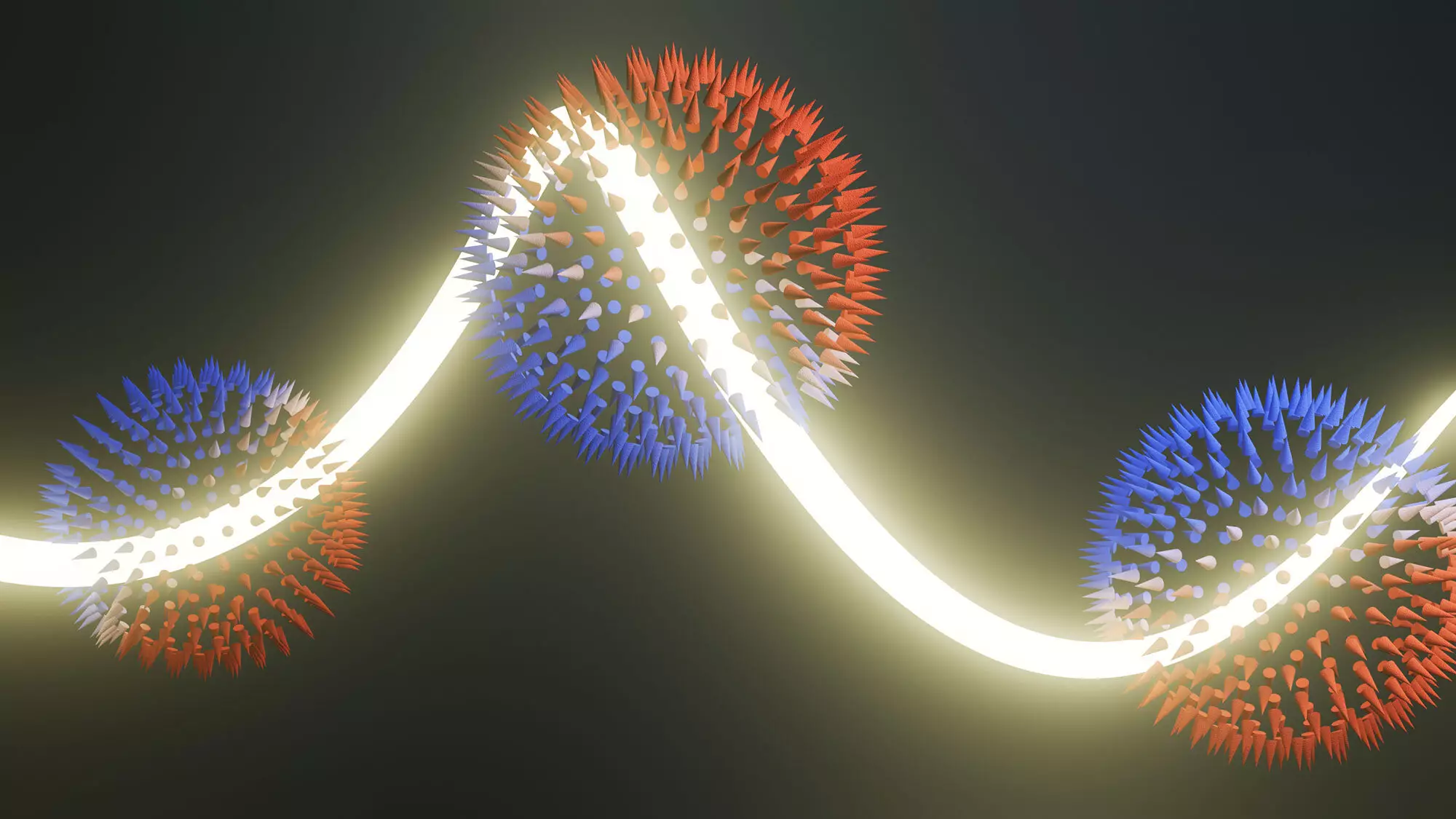In an age where energy efficiency is paramount, the search for alternatives to traditional electronics has garnered increasing attention. The nascent field of orbitronics emerges as a promising contender, shifting the paradigm from conventional electron charge-based information transfer to the exploration of different electron properties. One of the most intriguing avenues within orbitronics involves the orbital angular momentum (OAM) of electrons. This innovative approach not only holds potential for significantly reducing environmental impact but also raises critical questions about material selection and the feasibility of practical applications. Recent advancements at the Paul Scherrer Institute (PSI) in Switzerland have illuminated the path ahead, unveiling the existence of OAM monopoles—an exciting development in the orbitronics landscape.
While spintronics has dominated discussions regarding alternative electronics, focusing on the electron’s spin, orbitronics steps further into the realm of electron orbitals. The concept of OAM involves the angular momentum generated by the electrons revolving around their atomic nuclei, leading to the idea that this property could effectively process and transmit information. Researchers are increasingly interested in the unique characteristics of a new class of materials known as chiral topological semi-metals, which were first identified at PSI in 2019. Distinguished by their helical atomic structure reminiscent of a DNA double helix, these materials inherently possess properties favorable for generating OAM flows, making them a hot topic in contemporary materials science.
The critical appeal of OAM monopoles lies in their isotropic nature—meaning they radiate uniformly in all directions. This characteristic could drastically simplify the process of creating efficient OAM currents, as they don’t require external modifications or stimuli for generation. This phenomenal aspect led researchers like Michael Schüler, a pivotal figure in the recent study, to declare that these intrinsic properties can drastically enhance technological advancements in orbitronics.
Historically, the challenge of verifying the existence of OAM monopoles rested on bridging the gap between theoretical predictions and empirical observations. A viable approach has been utilizing the advanced technique known as Circular Dichroism in Angle-Resolved Photoemission Spectroscopy (CD-ARPES), which intends to measure the OAM by capturing the nuanced behaviors of electrons excited by circularly polarized light. However, the complexity of the relationship between the emitted signal and OAM compromised previous efforts, leaving researchers with a trove of data that was difficult to interpret.
To disentangle the enigma of OAM monopoles, Schüler and his colleagues initiated a comprehensive investigation of two types of chiral topological semi-metals—those comprising palladium and gallium, as well as platinum and gallium. They boldly challenged long-standing assumptions about the interactions in CD-ARPES and painstakingly investigated variations in photon energy during experimentation. This novel approach revealed that the data did not merely reflect OAM responses as was previously assumed, but rather, the signals exhibited intricate rotations around the predicted monopoles with shifting photon energies.
The monumental breakthrough of proving the presence of OAM monopoles paves the way for an exciting exploration of their properties and potential applications. By manipulating the polarity of these monopoles using materials with mirror image chirality, researchers are discovering possibilities for device directionalities that were previously unimagined. This newfound ability to create stable and efficient OAM currents is likely to push orbitronics beyond theoretical concepts into practical applications.
The implications of this research echo across multiple disciplines—ranging from advancements in memory devices to enhanced computational technologies. The potential for memory systems that consume minimal energy while offering enhanced performance could revolutionize the landscape of electronics, instigating a transition to a more sustainable technological future. Moreover, the ongoing exploration of materials that can engender OAM flows, particularly among chiral topological semi-metals, promises to extend the reach of orbitronics into areas previously thought unattainable.
As orbitronics gains momentum, the confluence of theory and experimental validation marks a pivotal moment in the field. The experimental observation of OAM monopoles serves as a cornerstone for future research, enabling scientists to further probe the intricate behaviors of these unique materials and explore their vast potential. As we inch closer to realizing the applications of orbitronics, the journey ahead is not merely one of scientific inquiry but also a crucial step towards a more energy-efficient technological landscape. The crossover potential for orbitronics to redefine electronics is refreshing, heralding an era where energy conservation and technological advancement coexist harmoniously.

